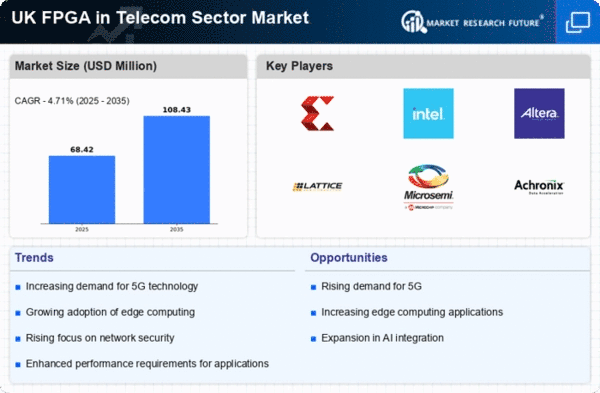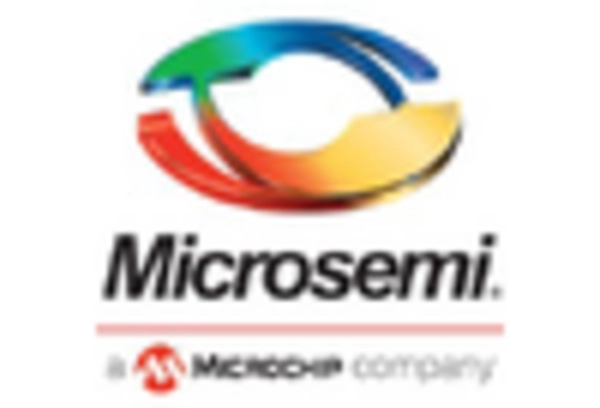Emergence of Edge Computing
The emergence of edge computing is poised to have a profound impact on The FPGA in Telecom Sector. As more data processing occurs closer to the source of data generation, the need for efficient and flexible processing solutions becomes paramount. FPGAs are well-suited for edge computing applications due to their ability to handle parallel processing tasks and low power consumption. In the UK, the edge computing market is expected to grow at a CAGR of 25% over the next five years, which may drive increased adoption of FPGAs in telecom applications. This shift towards edge computing indicates a potential transformation in how telecom operators deploy their resources, further solidifying the role of FPGAs in enhancing service delivery and operational efficiency.
Advancements in Network Virtualization
The fpga in-telecom-sector market is significantly influenced by advancements in network virtualization technologies. As telecom operators in the UK transition towards software-defined networking (SDN) and network functions virtualization (NFV), the demand for FPGAs is expected to rise. These technologies allow for more efficient resource allocation and management, enabling operators to dynamically adjust their network capabilities. The UK government has been actively promoting digital infrastructure development, which includes investments in virtualized networks. This is likely to create a conducive environment for the adoption of FPGAs, as they can provide the necessary processing power and flexibility to support virtualized network functions. Consequently, The FPGA in Telecom Sector may witness substantial growth as operators seek to enhance their operational efficiency and service delivery.
Increased Focus on Cybersecurity Solutions
In the context of The FPGA in Telecom Sector, the growing emphasis on cybersecurity is becoming a critical driver. With the rise in cyber threats targeting telecommunications infrastructure, there is a pressing need for robust security measures. FPGAs offer unique advantages in implementing security protocols due to their reconfigurable nature, allowing for real-time updates and adaptations to emerging threats. The UK telecommunications sector has seen a 30% increase in cybersecurity investments over the past year, reflecting the urgency to safeguard networks. This trend suggests that FPGAs will play a pivotal role in enhancing the security posture of telecom operators, thereby driving growth in the fpga in-telecom-sector market as companies prioritize the protection of sensitive data and network integrity.
Rising Demand for High-Speed Data Transmission
The fpga in-telecom-sector market is experiencing a notable surge in demand for high-speed data transmission solutions. This is largely driven by the increasing reliance on data-intensive applications, such as video streaming and cloud computing. In the UK, the telecommunications sector is projected to invest approximately £15 billion in infrastructure upgrades by 2026, which is likely to enhance the capabilities of FPGAs in supporting faster data rates. Furthermore, the need for low-latency communication in sectors like finance and healthcare is pushing telecom operators to adopt FPGAs, which can be reconfigured to meet specific performance requirements. This trend indicates a robust growth trajectory for The FPGA in Telecom Sector, as companies seek to leverage FPGAs to improve their service offerings and maintain competitive advantages.
Regulatory Support for Telecommunications Innovation
Regulatory support for telecommunications innovation is emerging as a key driver for The FPGA in Telecom Sector. The UK government has been actively promoting policies that encourage technological advancements within the telecom sector. Initiatives aimed at fostering innovation, such as funding for research and development, are likely to create a favorable environment for the adoption of FPGAs. As telecom operators seek to comply with new regulations and standards, the flexibility and adaptability of FPGAs may become increasingly attractive. This regulatory landscape suggests that the fpga in-telecom-sector market could experience accelerated growth as companies leverage FPGAs to meet compliance requirements while simultaneously enhancing their service offerings.
















Leave a Comment